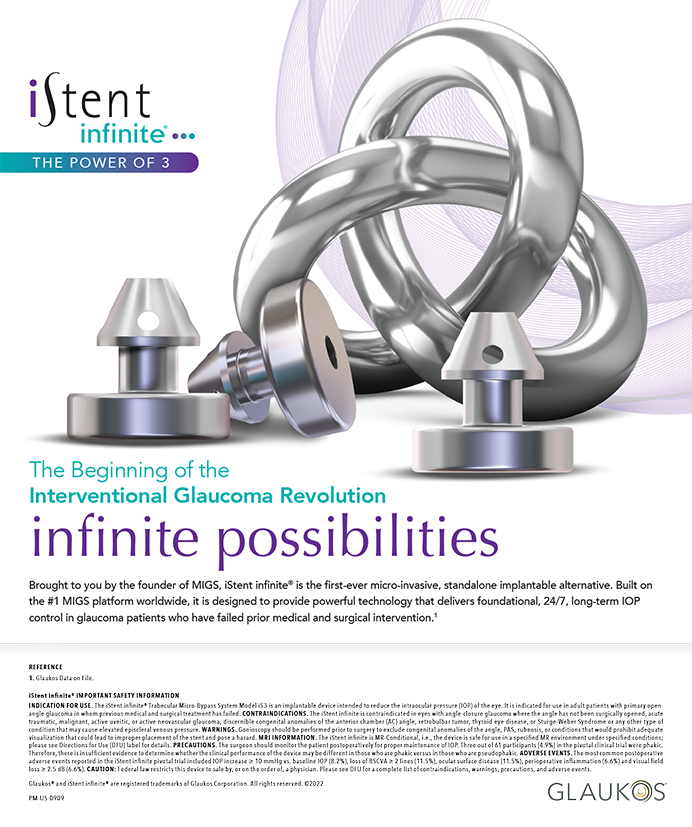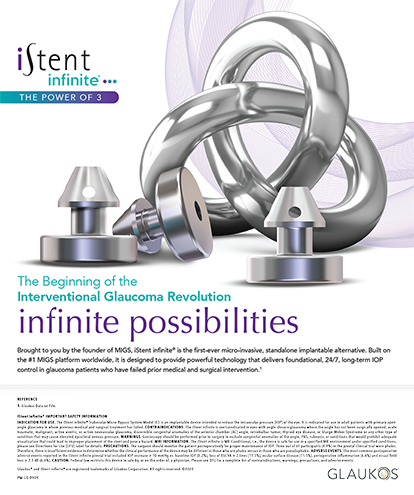In the United States, approximately 3.2 million cataract procedures were performed in 2009. This represents 200,000 more procedures than in 2008, and the number is expected to rise as the baby boomers begin developing cataracts (Figure 1). Elective IOLs (presbyopia- correcting and toric lenses) currently make up 12.6% of all IOLs implanted. Interestingly, in the last 2 years, the use of presbyopia-correcting IOLs has been relatively flat, but recently, there has been substantial growth in the number of toric IOLs implanted (Figure 2).
We as surgeons have found ourselves in a marketplace where Medicare payments are at best flat—and possibly on the decline—while the overhead costs of our practices continue to rise, in part due to regulations imposed by agencies over which we have no control. The question we all must ask is, How do I improve profitability in my practice to keep pace with these expenses? One way is to offer elective IOLs. Although much has already been written on this subject, the use of these lenses is growing only slightly.
THE USE OF ELECTIVE IOLS
Certainly, the volume of cataract procedures is an important driver of our use of elective IOLs, and the trends noted previously are encouraging. Similar to our inability to predict or control an individual patient’s socioeconomic status, their insurance coverage, regional socioeconomic status, and the state of the economy in general, we can do very little to influence the number of cataract patients who present to our practices. How, then, can we maximize our use of high-technology elective IOLs?
Most important to the process is our “buy-in.” Only if we are strong advocates will others in the office follow follow our lead, and a team approach is necessary for success. This does not mean that we should attempt to push every patient to choose an elective lens. To the contrary, we should simply discuss these IOLs as options with every prospective cataract patient, outline their pros and cons, and give the choice to him or her.
We must therefore be well acquainted with all available IOL technologies. Recent Market Scope survey data from the fourth quarter of 2009 (n = 507) found that the AcrySof Toric IOL (Alcon Laboratories, Inc., Forth Worth, TX) is the primary toric IOL being implanted, and the company’s AcrySof Restor multifocal is the most commonly implanted presbyopia-correcting IOL. Other presbyopia-correcting IOLs include the Tecnis Multifocal IOL (Abbott Medical Optics Inc., Santa Ana, CA), introduced in 2009, and the Crystalens (Bausch + Lomb, Rochester, NY). Figure 3 shows the US market share by lens type.
By knowing the strengths and weaknesses of each IOL style, we can recommend the one(s) that will best suit the individual patient’s needs. Needless to say, the designs that best meet patients’ needs for near, intermediate, and distance acuity, while inducing the fewest visual disturbances, will be the most widely used. For example, the AcrySof IQ Restor IOL +3.0 D (Alcon Laboratories, Inc.) provides significantly better intermediate visual acuity than the earlier +4.0 D version of the lens. Also, compared to the +4.0 D design, the Restor +3.0 D pushes the near point for fine close vision out slightly without further inducing visual disturbances. The positive impact of this improved range of vision is reflected in an increase in market share and the +3.0 D IOL’s continued growth.
INCREASE IN THE USE OF TORIC IOLS
Why the increase in the number of toric IOLs implanted? They are the solution for patients who want good uncorrected distance vision yet do not desire uncorrected near acuity. Clinical studies have shown that the AcrySof Toric IOL has rotational stability, reduces residual refractive cylinder, and improves UCVA when compared with a control IOL, and it allows patients spectacle freedom for distance vision.1,2
With several years’ experience, surgeons have popularized standardized methods and techniques for accurately and predictably placing the Acrysof Toric IOL. Results with the lens are excellent. Moreover, compared with LASIK or PRK, implantation of this IOL requires no specialized training or expensive instrumentation on the part of the surgeon.
Toric IOLs offer us the opportunity to provide a great service to our patients by improving their visual quality at the time of cataract surgery. They also help newer surgeons segue into the refractive cataract marketplace. Unlike presbyopia-correcting IOLs, toric lenses are easier to incorporate into a practice. They require substantially less chair time, commitment to staffing, educational development, and retooling of a practice’s processes.
Offering toric IOLs will increase reimbursement levels, because the Centers for Medicare & Medicaid Services’ ruling allows physicians to charge Medicare patients for the difference between the cost of implanting these IOLs versus a conventional lens.
EVERYONE IS A WINNER
Refractive cataract surgery makes everyone involved a winner, whether the implanted lens is a toric or a presbyopia-correcting design. The patient receives an IOL that improves his or her uncorrected vision and increases his or her potential for total independence from spectacles. By implanting elective IOLs, we are reimbursed more fairly for our work, and we enjoy delivering improved results to our patients. Manufacturers are more fairly paid for the advances they bring to market, which motivates them to continue research and development. All of these benefits come at no additional cost to the US government.
Stephen S. Lane, MD, is a managing partner of Associated Eye Care in St. Paul, Minnesota, and an adjunct clinical professor for the University of Minnesota in Minneapolis. He is a consultant to and receives lecture fees from Alcon Laboratories, Inc. Dr. Lane may be reached at (651) 275-3000; sslane@associatedeyecare.com.
- Ernest P.Evaluation of clinical outcomes with the AcrySof Toric IOL:1-year results.Paper presented at:American Society of Cataract and Refractive Surgery Symposium & Congress; April 28 to May 2, 2007; San Diego, CA.
- Lane SS, Paul E, Miller K, et al.Comparison of clinical and patient-reported outcomes with bilateral AcrySof Toric or spherical control intraocular lenses. J Refract Surg.2009; 25(10):899-904.


